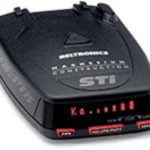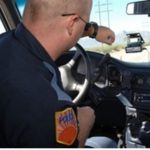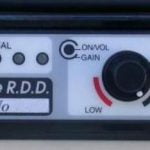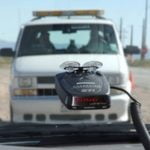[fusion_builder_container hundred_percent=”no” equal_height_columns=”no” menu_anchor=”” hide_on_mobile=”small-visibility,medium-visibility,large-visibility” class=”” id=”” background_color=”” background_image=”” background_position=”center center” background_repeat=”no-repeat” fade=”no” background_parallax=”none” enable_mobile=”no” parallax_speed=”0.3″ video_mp4=”” video_webm=”” video_ogv=”” video_url=”” video_aspect_ratio=”16:9″ video_loop=”yes” video_mute=”yes” video_preview_image=”” border_color=”” border_style=”solid” margin_top=”” margin_bottom=”” padding_top=”” padding_right=”” padding_bottom=”” padding_left=”” type=”flex”][fusion_builder_row][fusion_builder_column type=”3_4″ layout=”3_4″ spacing=”” center_content=”no” hover_type=”none” link=”” min_height=”” hide_on_mobile=”small-visibility,medium-visibility,large-visibility” class=”” id=”” background_color=”” background_image=”” background_position=”left top” background_repeat=”no-repeat” border_color=”” border_style=”solid” border_position=”all” padding_top=”” padding_right=”” padding_bottom=”” padding_left=”” margin_top=”” margin_bottom=”” animation_type=”” animation_direction=”left” animation_speed=”0.3″ animation_offset=”” last=”false” border_sizes_top=”0″ border_sizes_bottom=”0″ border_sizes_left=”0″ border_sizes_right=”0″ first=”true” spacing_right=””][fusion_text columns=”” column_min_width=”” column_spacing=”” rule_style=”default” rule_size=”” rule_color=”” hide_on_mobile=”small-visibility,medium-visibility,large-visibility” class=”” id=”” animation_type=”” animation_direction=”left” animation_speed=”0.3″ animation_offset=””]
Jan 01, 2006 – NIWOT, CO
Client: Beltronics, Inc.
Products Evaluated: Beltronics STi Driver, now replaced by the STi Magnum
Evaluation Criteria: RF Leakage And Detection By Radar Detector Detectors
Evaluation Date: 22 October 2005 Evaluation
Location: Stan Roberts Senior Road, El Paso, TX
Evaluation Personnel: Carl Fors, SML, Dave Adams E.E., and local law enforcement officers.
Report Date/Number: 31 October 2005/SML0404-11
Overview: The Federal Communications Commission, FCC, expressed its concern of RF (radio frequency) leakage by radar detectors commencing in its announcement of 19 July 2002. The FCC further required all radar detectors to comply with “unintentional radiators” requirements in several parts of CFR (Code of Federal Regulations) 47 and subparts of Part 15 therein. The FCC stated radar detectors may not exceed radiation limits of a field strength of 500 uV/m measured at 3 meters from the device. The FCC further required all radar detectors be submitted for evaluation of this radiation standard. The FCC then required all radar detectors be labeled as complying with the regulations. The labeling must contain an FCC ID # of the detector and contain the wordage of “This device complies with Part 15 of the FCC rules. Operation is subject to the following two conditions: (1) this device may not cause harmful interference and (2) this device must accept any interference received including interference that may cause undesired operation.” The FCC has consistently affirmed radar detectors to be a legal device most notably in the FCC’s Public Notice, DA96-2040, issued 9 December 1996. However, this directive allowed states and other federal agencies to deem radar detectors in their jurisdiction illegal as did the United States Department of Transportation banning the use of radar detectors in commercial vehicles in February 1995. This ban included eighteen wheelers, but did not apply to cars. Radar detectors in cars are restricted only in Virginia, Washington, D.C., and on United States military reservations. Beginning in the late 1990’s a product designed to detect the presence of an illegally operated radar detector was introduced to be used by law enforcement personnel. It was called a radar detector detector, RDD. Kustom Signals Inc. marketed this product under the name of VG-2 as it was looking for RF local oscillator leakage at 11.55 GHz. Subsequent to the VG-2, the Spectre RDD was introduced to the American market by Microstealth Technologies of Australia. The Spectre detected a wide range of local oscillator, LO, frequencies as radar detector makers changed their electronic configurations. A new VG-4 RDD has now entered the market from Hill Country Research of Fredericksburg, TX.
The range at which the RDD’s detected a radar detector’s lo leakage is a measure of its compliance with the aforementioned FCC requirements for “unintentional radiators.” Many times high leakage radar detectors will interfere with other radar detectors in the opposite lane of an interstate highway. The opposite lane radar detector will alert the driver, but in actuality it’s receiving the high leakage signal of the radar detector approaching. Radar detectors continually strive to make their detectors “leak proof” with improved shielding. During SML’s June Annual Detector Test all radar detectors were exposed to all RDDs including the newest revision of the Spectre, the Spectre III. All detectors were detected by the Spectre III. Some were detected at great distances past 1/4 mile. Beltronics, Inc. contracted with SML to determine the detectablity of their new STi Driver radar detector. Detectabilty is defined as not radiating any signal complying with the FCC “unintentional radiator” provisions of CFR 47, Part 15 as referred to previously and to being detected by RDDs. Methodology: As is standard practice with all SML field tests radar guns and other enforcement equipment are solely operated by radar/laser certified police officers using the devices in accordance with guidelines of the IACP. The police officers also record the results of tested products along with riding in the test vehicle with the representatives of the respective radar detector maker as observers. These “ride along” officers report to the test vehicle the performance of the tested product. This standard practice eliminates any bias. Beltronics provided Ron Gividen as a representative of the company and he brought the Beltronics sample, STi Driver, to the field evaluation. The STi Driver is built like a tank made with a finely detailed black, metal case. It feels substantial and is. You could hit it with a hammer and it would smile back. It’s designed for durability and the abuse of dropping it out of your SUV on a four wheel camping trip. We were tempted to drag it attached to the bumper of the test vehicle for a mile before putting it into operation. In twenty years of testing radar detectors, we’ve never seen such construction. Prior to testing for RF leakage, the sample, i.e. Beltronics STi Driver, was tested for reception of standard radar bands from 1/2 and 1/4 mile. Orange cones were placed at these locations and distance confirmed using a Kustom Signals Pro Laser III laser gun set to the range mode. This assures accuracy to 1/10th of a foot. A white Ford Taurus was used as a test vehicle and the STi Driver was mounted per the instruction manual of the product Mr. Gividen brought with him. The pavement was dry with an ambient temperature ranging from 57F to 74F. Humidity as reported by National Weather Service Radio was 13%. Testing began at 0900 hrs. and ended at 1500 hrs. The testing location has an elevation of 3,216 feet above sea level and is devoid of any RF signals in the radar bands to be evaluated. A RF sweep was made of the test course prior to testing insuring no competing RF signals were present. During the 1/2 and 1/4 mile test, the sample was exposed to radar guns transmitting on X band at 10.525 GHz, K band at 24.150 GHz, and Ka band at 34.7 GHz. The sample correctly identified each transmitted frequency at each distance cone. For re-verification, other radar detectors were also included in this common distance reception test including a Valentine One and a Whistler 1778 model. All models were also exposed to a Kustom Signals Pro Laser III transmitting at 904 nanometers. When aimed at the detectors, all models correctly reported laser reception. The RDD test began at the completion of the radar gun verification evaluation. The test vehicle containing the detectors began approaching the van containing the RDDs from the 1/4 mile cone at 30 mph. Once detected, the driver was told to stop and the detection distance was recorded by the laser gun in the range mode. The detection distance was re-verified by a second laser reading while the test vehicle was stopped. All detectors were given five runs at four different RDDs including the VG-2, VG-4, Spectre II, and Spectre III. The Spectre III was provided by the police officers as they brought it to the test site. The five detection distances were then averaged. If the test vehicle did not stop immediately when told to do so by the van’s radio operator, that particular run was cancelled and it was run again. Results: The Beltronics STi Driver was completely invisible to all RDDs down to point blank range with the noses of the test vehicle and the test van touching. It’s the black hole of signal leakage. The only way to detect the Driver is to see it! The other two tested detectors were easily detected by both the Spectre II and the Spectre III. Radar Detection Distances By Make & Detection Distance Distance reported in feet (ft) from the Radar Detector Detector (RDD). ND = Radar Detector Was “Not Detected”) Radar————RDD—–RDD—-RDD———–RDD Detector———VG-2—-VG-4—-Spectre II—-Spectre III Valentine One—ND——ND——-644 ft———544 ft Whistler 1788—1456 ft–155 ft—-630 ft———4655 ft Bel STi Driver—ND——ND——-ND————ND As a final test we drove the test vehicle with the STi Driver operational to the front of the test van containing the RDDs to see if we could electronically detect it. We couldn’t. At this close distance the STi Driver actually detected the RF leakage of the Spectre’s while the Spectres were blind to the use of the Driver. Conclusion: The field testing confirms the advertising claims of the Beltronics STi Driver. The Bel STi Driver is the only radar detector completely invisible to all radar detector detectors with blistering sensitivity to all radar bands. It did not “key” up other radar detectors attesting to its strict compliance wearing the “white hat” good guy award with FCC regulations regarding “unintentional radiation” of RF signals. This evaluation was conducted in accordance with accepted police practices for operation of radar and laser speed measurement devices as outlined by the International Association of Chiefs (IACP) and NHTSA. Police officers observed, reported, and verified the testing procedures. Attested To This 31th Day of October 2005 Carl Fors, B.S., M.S., President Speed Measurement Laboratories Inc. FCC Licensee RS Radiolocation KNNNN392 Certified Master Radar Laser Instructor-LES CF/rd fil
[/fusion_text][fusion_text]
Call 1st Radar Detectors in Canada at 250-324-8004 or in the USA at 720-635-3931 to discuss your requirements and we will figure out what what you need for your business or your vehicle, and find a US/Canada installer for you. Regards, John Turner
STiR Plus, HP905 Quad Laser Jammer, APC Power Control
STiR Plus, HP905 Quad, HP905 Dual and ProDB-2 Dual PhotoBlocker
Contact 1st radar Detectors at [email protected] to purchase a radar detectors, laser jammer, radar laser jammer; and a photo blocker on passenger cars, pick up trucks, SUVs, and motorcycles in the UK, USA, Australia, Canada, Europe, South America and New Zealand.
[/fusion_text][/fusion_builder_column][fusion_builder_column type=”1_4″ layout=”1_4″ spacing=”” center_content=”no” hover_type=”none” link=”” min_height=”” hide_on_mobile=”small-visibility,medium-visibility,large-visibility” class=”” id=”” background_color=”” background_image=”” background_position=”left top” background_repeat=”no-repeat” border_color=”” border_style=”solid” border_position=”all” padding_top=”” padding_right=”” padding_bottom=”” padding_left=”” margin_top=”” margin_bottom=”” animation_type=”” animation_direction=”left” animation_speed=”0.3″ animation_offset=”” last=”true” element_content=”” border_sizes_top=”0″ border_sizes_bottom=”0″ border_sizes_left=”0″ border_sizes_right=”0″ first=”false”][fusion_text]

The STi Driver looks good, and is so invisible, that the RDD can drive right by your vehicle, and would never know you have a radar detector.
Beltronics STi Driver RDD test by SML

SML Test of Bel STi Driver, El Paso, Sheriff’s Deputy prepares RDD

Spectre III RDD, the most aggressive RDD tools used by police. Bel STi Driver was completely invisible to it.

The Bel STi Driver Radar Detector with 100% Stealth Invisibility. If you want RDD stealth, this is the one to get!!!
[/fusion_text][/fusion_builder_column][/fusion_builder_row][/fusion_builder_container]

Recent Comments